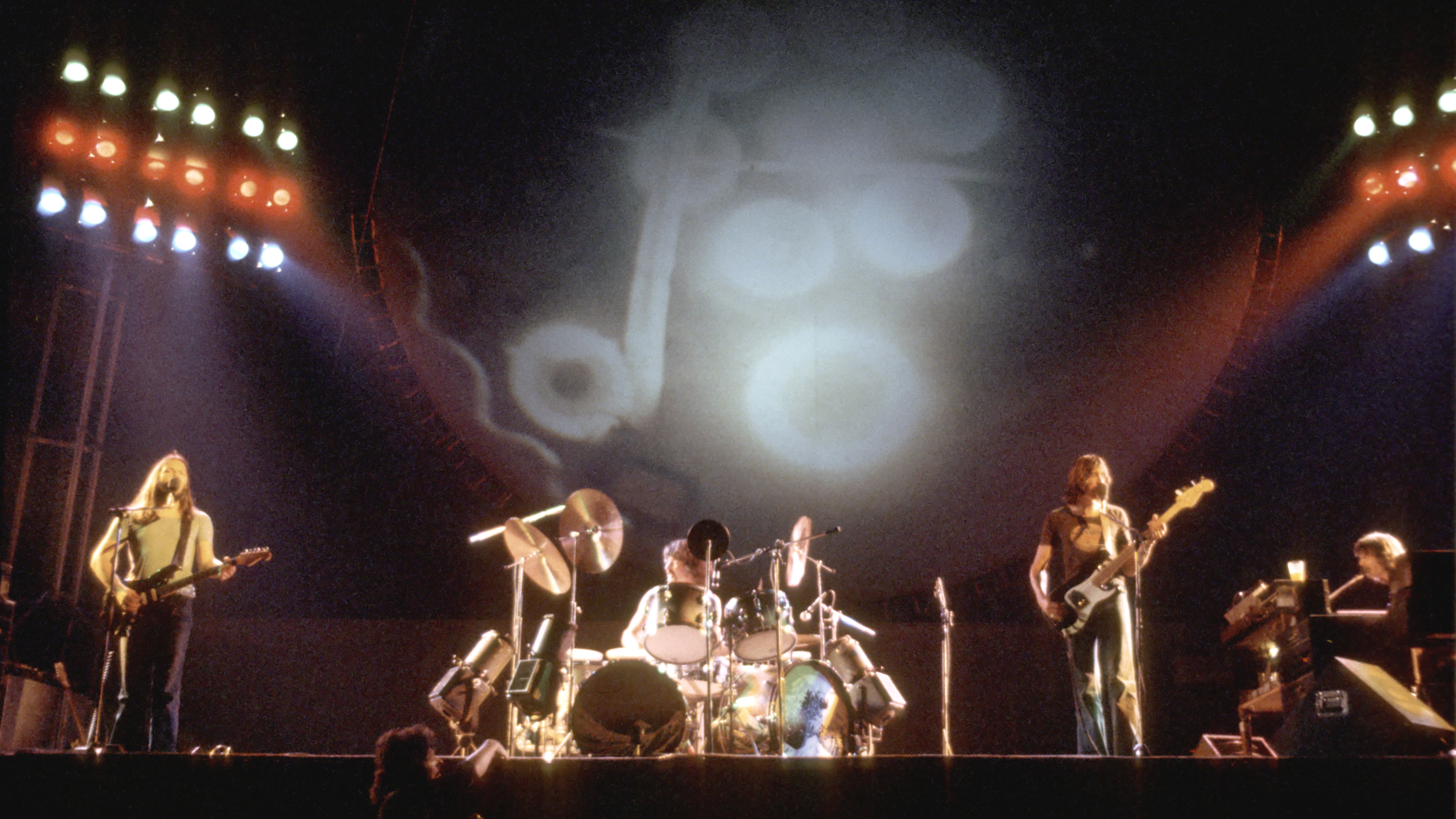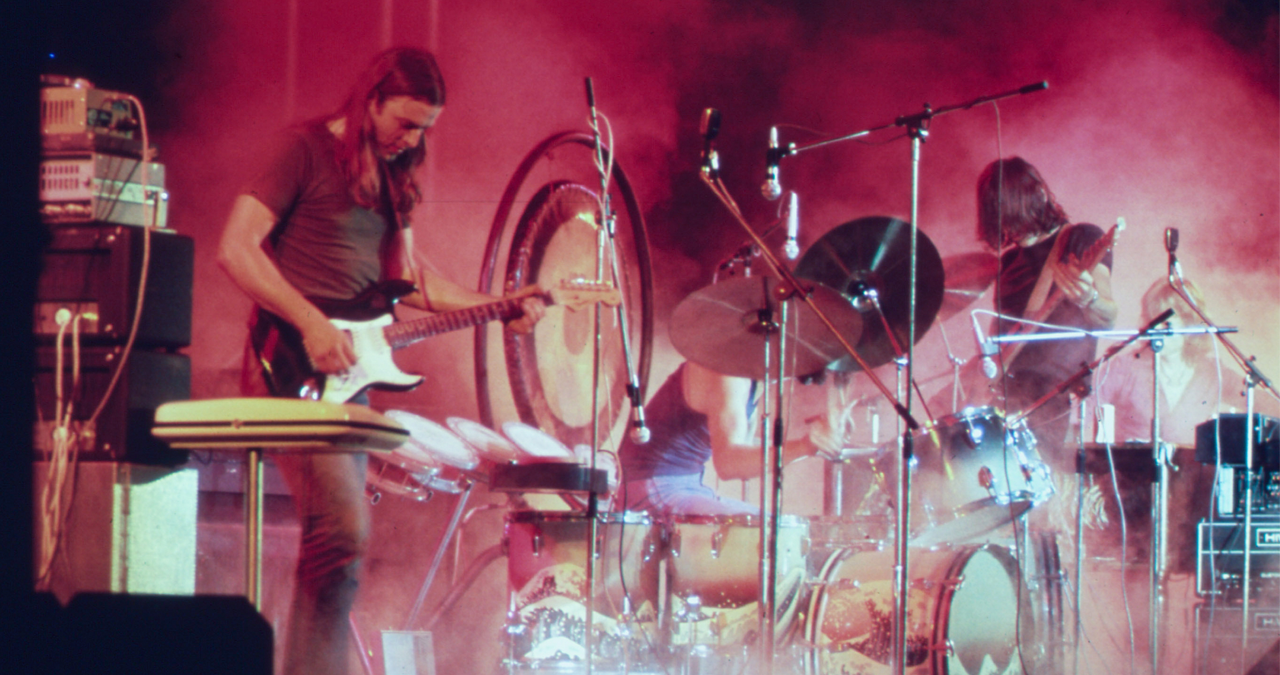“I don’t hear the song as being about Syd Barrett – I hear it as describing the failed bromance between David Gilmour and Roger Waters”: A music professor breaks down Pink Floyd's Wish You Were Here
As we approach Wish You Were Here's 50th anniversary, we analyse the sublimely strange structure of its ambitious title track

You might think that you’re burned out on Pink Floyd’s Wish You Were Here from classic rock radio and beginner guitarists.
I certainly ran my cassette copy of the album into the ground in my teenage years, then ran the song into the ground again when I was learning guitar. But if you come back to it with fresh ears, you’ll discover that Wish You Were Here is sublimely weird on a structural level.
This is a rare song written jointly by Roger Waters and David Gilmour, whose mutual dislike typically prevented this kind of collaboration. Gilmour came up with the opening riff, but intended it to be uptempo. Waters heard it and suggested that he try it slower. They worked out the rest of the music together, then Waters wrote the lyrics. Gilmour sings it on the album, and I think it’s his best recorded vocal performance.
The transition from the end of Have A Cigar is a musique concréte radio collage that includes dialogue from an unnamed radio play and a snippet of the fourth movement of Tchaikovsky’s Symphony No. 4.
At 0:18, Gilmour’s rhythm guitar enters, playing a simple pentatonic riff over some cowboy chords. It also sounds like it’s coming from the radio, though this was simulated using EQ. (Just cut off the high and low frequencies, leaving only the mids, and voila: instant old-timey radio broadcast.) You can also hear some breathing and shuffling around, as if someone is sitting there listening to the radio with you.
Pink Floyd plays slower than any other mainstream rock band. This can make their weaker material a slog, but in a song like this, the stately tempo is luxurious
How about those chords? They include G, Am, C, D and Em. These are five of the seven diatonic chords in G major, that is, the chords you can make from the notes in the G major scale: G, A, B, C, D, E and F-sharp. Since the song starts on the Em chord, you could also hear the key as E minor.
The G major and E minor scales are the same notes in the same order, just starting in different places. Think of G major as the word RESPECT and the E minor scale as the word SPECTRE. The technical term for this is that G major and E minor are modes of each other, just like RESPECT and SPECTRE are.
Want all the hottest music and gear news, reviews, deals, features and more, direct to your inbox? Sign up here.
There is one more chord, A7, which is an outlier because it doesn’t fit within G major or E minor. You could think of it as belonging to A Mixolydian, E Dorian, or D major. These scales are all modes of each other, like SPECTRE, PECTRES and ECTRESP.
The tempo is extremely slow – sixty beats per minute – so each beat is a full second long. Pink Floyd plays slower than any other mainstream rock band. This can make their weaker material a slog, but in a song like this, the stately tempo is luxurious.

This guitar intro is ten measures long.
| Em | G | Em | G |
| Em | A7 | Em | A7 |
| G | G |
The length is a little peculiar; rock song sections are usually four, eight, twelve or sixteen measures long.
At 0:58, the lead acoustic guitar enters, clean and present. The idea is that you’re hearing a guy playing his guitar along with the radio. (I actually do recommend this as an improvisation exercise.) The guitar solo happens over a repeat of the same chords we just heard, but with a twist; it’s only nine measures long.
| Em | G | Em | G |
| Em | A7 | Em | A7 |
| G |
At 1:34, verse one begins. Here’s how it looks in measures.
| (C) So, so you think you can | (D) tell heaven from |
| (Am) hell? Blue skies from | (G) pain? Can you tell a green |
| (D) field from a cold steel | (C) rail? A smile from a |
| (Am) veil? Do you think you can | (G) tell…
That last “tell” is actually in the next verse.
The real musical interest in Wish You Were Here is in its strange hypermeter. This term seems like an esoteric music theory idea, but it’s one that you’re already intuitively familiar with. In the same way that you group beats into measures, you can also group measures into hypermeasures.
In rock and pop, hypermeasures are often more important organizational units than individual measures
Measures have accented beats and unaccented beats. By the same token, hypermeasures have accented and unaccented measures. In rock and pop, hypermeasures are often more important organizational units than individual measures.
Verse one is nine measures long, and it doesn’t group neatly into hypermeasures at all. You might group it with a half hypermeasure at the end, like the guitar solo:
|| (C) So, so you think you can (D) tell heaven from ||
|| (Am) hell? Blue skies from (G) pain? Can you tell a green ||
|| (D) field from a cold steel (C) rail? A smile from a ||
| (Am) veil? Do you think you can | (half hypermeasure)
|| (G) tell…
This grouping makes sense at the beginning of the verse, but it starts feeling wrong by the end, because I intuitively want to group “cold steel rail” together with “smile from a veil”. Here’s the other way you could group it, with the half hypermeasure at the beginning:
| (C) So, so you think you can | (half hypermeasure)
|| (D) tell heaven from (Am) hell? Blue skies from ||
|| (G) pain? Can you tell a green (D) field from a cold steel ||
|| (C) rail? A smile from a (Am) veil? Do you think you can || (G) tell…
This is more satisfying at the end, but it sounds wrong in the beginning. You don’t normally start a song section with a half hypermeasure, because it feels awkward. But maybe the final G chord in the guitar solo actually belongs to the verse? Then both the guitar solo and the verse would be an even number of measures long, and we could group them into nice hypermeasures.
|| (G) [end of guitar solo] (C) So, so you think you can ||
|| (D) tell heaven from (Am) hell? Blue skies from ||
|| (G) pain? Can you tell a green (D) field from a cold steel ||
|| (C) rail? A smile from a (Am) veil? Do you think you can || (G) tell…
The problem with this solution is that now the first line of the verse starts halfway through the hypermeasure, and that is wildly counterintuitive. Lyrical phrase boundaries should always line up with the hypermeter. Also, I want “hell” to be in a strongly accented position, and now it isn’t.
What if we put the half hypermeasure in the middle somewhere? We could group things like so:
|| (C) So, so you think you can (D) tell heaven from ||
|| (Am) hell? Blue skies from (G) pain? Can you tell a green ||
| (D) field from a cold steel | (half hypermeasure)
|| (C) rail? A smile from a (Am) veil? Do you think you can || (G) tell…
This is unsatisfying too. The G chord is the tonic, a point of definiteness and stability. It should fall on a strong hypermetrical accent, and it doesn’t.
I could take you through all the possible permutations of half hypermeasure placement in this verse, and all of them would be equally unsatisfying for one reason or another. But so what? Who cares about hypermeter? The thing is, you do! So does everyone. We can’t help it, we instinctively want measures to form logical groups.
The weird hypermeter in Wish You Were Here is evidenced in online chord charts and lyrics sheets: no one is sure where to put the line breaks
When the hypermeter is disrupted, we can’t understand where the strong and weak accents are, when an idea has concluded and when to expect the next one. It’s a disorienting sensation. The weird hypermeter in Wish You Were Here is evidenced in online chord charts and lyrics sheets: no one is sure where to put the line breaks.
Let’s move on to verse two at 2:04. Genius seems to think that verse two starts on “Did they get you to trade”. It doesn’t, but you can understand their confusion; this is hypermetrical ambiguity at work. Verse two doesn’t repeat the form of verse one as you would expect. The chords are in a different order and the melody isn’t the same.
| (G) tell? Did they get you to | (C) trade your heroes for |
| (D) ghosts? Hot ashes for | (Am) trees? Hot air for a |
| (G) cool breeze? Cold comfort for | (D) change? Did you ex- |
| (C) change a walk-on part in the | (Am) war for a lead role in a | (G) cage? |
As with verse one, verse two is nine bars long, and there’s no way to neatly group it into hypermeasures. I hear it like this:
|| (G) tell? Did they get you to (C) trade your heroes for ||
|| (D) ghosts? Hot ashes for (Am) trees? Hot air for a ||
| (G) cool breeze? Cold comfort for | (half hypermeasure)
|| (D) change? Did you ex- (C) change a walk-on part in the ||
|| (Am) war for a lead role in a (G) cage? ||
That half hypermeasure with the G chord is ambivalent; I keep wanting to group it with the previous or following phrase, but that would mess up the grouping at the beginning or end of the verse.
At 2:40, there’s another guitar solo, using the same form as the one in the intro. David Gilmour scat-sings along with the guitar in unison. Gilmour plans out all of his solos by singing them; he just doesn’t usually include his guide vocal in the finished track.
Singing your solos is a great practice, because it enforces natural phrasing. Guitarists don’t have to pause for breath, but they should anyway. Putting in “breaths” gives a solo a natural shape, and prevents it from sounding like a string of undifferentiated notes.
Finally, at 3:15, we get verse three, which Genius rather oddly calls the “chorus”. It’s exactly the same form as verse one. However, there’s a key difference. That final G chord belongs to this section, not the next one, so the verse is an even number of measures long.
| (C) How I wish, how I wish you were | (D) here, we're just |
| (Am) two lost souls swimming in a fishbowl | (G) year after year |
| (D) Running over the same old ground, what have we | (C) found? The same old |
| (Am) fears, wish you were | (G) here |
The even number of measures means that we can group this conventionally into hypermeasures. What a relief!
|| (C) How I wish, how I wish you were (D) here, we're just ||
|| (Am) two lost souls swimming in a fishbowl (G) year after year ||
|| (D) Running over the same old ground, what have we (C) found? The same old ||
|| (Am) fears, wish you were (G) here ||
Even though the lyrics in this last verse express regret and frustration, the music tells a different story: conclusiveness, symmetry, a narrative climax. What does it mean? That this relationship is a failure, but a beautiful failure? Isn’t that the story of Pink Floyd?
When you look at the chords to Wish You Were Here as a string of symbols on the page, they look boring and stodgy. When you hear the song, though, they are fascinating
The album Wish You Were Here is supposed to be about Syd Barrett, Floyd’s original frontman and main songwriter. Barrett had mental health problems, and as he became more erratic and unreliable, the band replaced him with Gilmour. While that was probably unavoidable, they felt intensely guilty about it afterwards – Gilmour included. However, I don’t hear the song Wish You Were Here as being about Barrett; I hear it as describing the failed bromance between Gilmour and Roger Waters.
In rock and pop, when the chords are often matters more than what they are. The chords in Wish You Were Here’s verses are all from G major, but they don’t function the way that the key of G major is “supposed” to. There aren’t any strong cadences, just one chord after another, without much sense of tension or resolution.
If your melodies, harmonies, arrangement and production are this excellent, it can make whatever words you’re singing seem vastly more profound
This aimless and ambiguous harmony is echoed in the odd and unpredictable metrical structure. When you look at the chords to Wish You Were Here as a string of symbols on the page, they look boring and stodgy. When you hear the song, though, they are fascinating, because their musical meaning is all in the timing.
I haven’t talked about the lyrics in this article, and that’s because I don’t think they are all that special. I thought they were very profound when I was in middle school, but as an adult, I come at them with more cynicism. Rhyming “change” and “exchange” is especially un-graceful.
If these lyrics were presented to you as a poem in a book, you probably wouldn’t be impressed, but the music elevates them. This is true of a lot of Pink Floyd songs, and songs generally. If your melodies, harmonies, arrangement and production are this excellent, it can make whatever words you’re singing seem vastly more profound.
Ethan Hein has a PhD in music education from New York University. He teaches music education, technology, theory and songwriting at NYU, The New School, Montclair State University, and Western Illinois University. As a founding member of the NYU Music Experience Design Lab, Ethan has taken a leadership role in the development of online tools for music learning and expression, most notably the Groove Pizza. Together with Will Kuhn, he is the co-author of Electronic Music School: a Contemporary Approach to Teaching Musical Creativity, published in 2021 by Oxford University Press. Read his full CV here.
You must confirm your public display name before commenting
Please logout and then login again, you will then be prompted to enter your display name.
